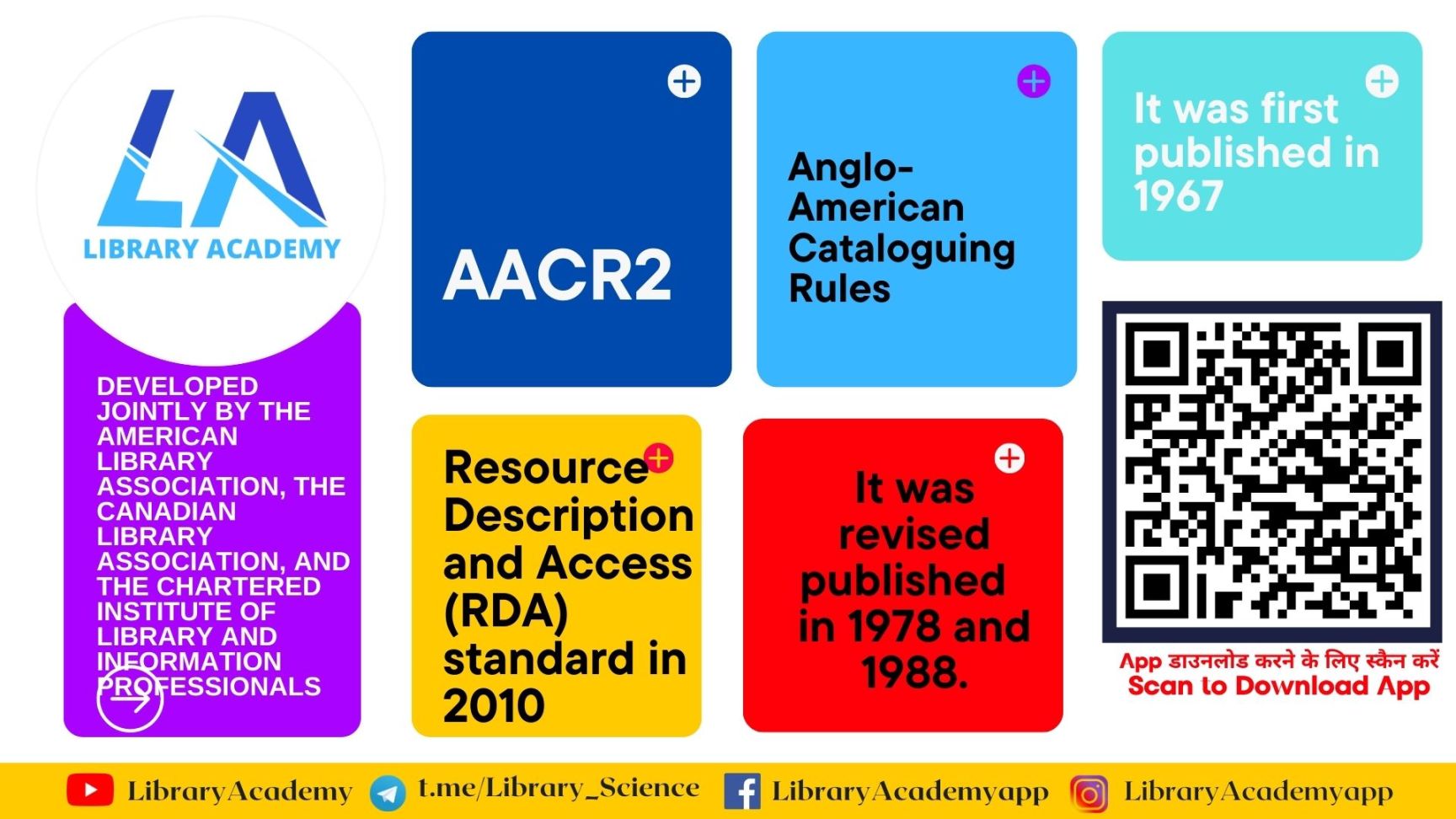Anglo-American Cataloguing Rules
AACR2 stands for "Anglo-American Cataloguing Rules, Second Edition" which is a set of rules for creating bibliographic records for library catalogs. It was first published in 1967 and revised in 1978 and 1988.
The rules were developed jointly by the American Library Association, the Canadian Library Association, and the Chartered Institute of Library and Information Professionals in the United Kingdom. AACR2 provides guidelines for cataloging various types of materials, including books, serials, audiovisual materials, maps, and electronic resources.
AACR2 provides a standardized format for bibliographic descriptions and a set of rules for determining the access points to be used in the catalog record, such as author, title, and subject headings. It also includes rules for determining the form of the entry, such as the use of punctuation and capitalization.
AACR2 was widely used in libraries around the world until it was superseded by the Resource Description and Access (RDA) standard in 2010. However, some libraries still continue to use AACR2 for legacy records.
The AACR2 format for bibliographic description generally includes the following elements:
Main entry: This is the primary access point for the resource being cataloged, and usually includes the author's name, corporate body, or title if there is no personal or corporate author.
Title and statement of responsibility: This includes the title of the resource and any additional information relating to the authorship or responsibility for the creation of the resource.
Edition: This includes information about the edition of the resource being cataloged.
Publication information: This includes information about the place of publication, name of publisher, and date of publication.
Physical description: This includes information about the physical characteristics of the resource, such as the number of pages or volumes, dimensions, and illustrations.
Series Statement: This includes information about any series to which the resource belongs.
Notes: This includes any additional information about the resource that may be helpful to users, such as bibliographical references or a summary of the content.
Standard number: This includes any standard numbers associated with the resource, such as an ISBN or ISSN.
The AACR2 format also includes rules for determining the form of the entry, such as the use of punctuation, abbreviations, and capitalization, as well as rules for determining access points such as author, title, and subject headings.
The latest edition of AACR2 (Anglo-American Cataloguing Rules, Second Edition) was published in 1988. AACR2 was widely used in libraries around the world for over three decades, but it was superseded by the Resource Description and Access (RDA) standard in 2010. RDA is a new cataloging standard that builds on AACR2, but with a number of significant changes and updates to reflect the changing nature of bibliographic descriptions and the increasing use of digital resources.
RDA is designed to be a more flexible and adaptable standard than AACR2, with a focus on providing descriptive metadata that can be easily shared and reused across different library systems and platforms. RDA also includes new elements and rules for describing digital resources, as well as new guidelines for handling non-textual resources such as multimedia and sound recordings.
It's worth noting that while AACR2 is no longer the official cataloging standard, many libraries still have a large number of records cataloged using AACR2, and these records are still used and maintained by libraries around the world.
Download the Library Academy App: Click Here
Subscribe YouTue Channel: Click here


Post a Comment